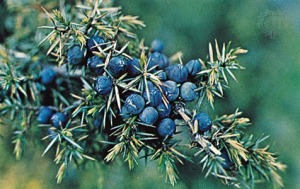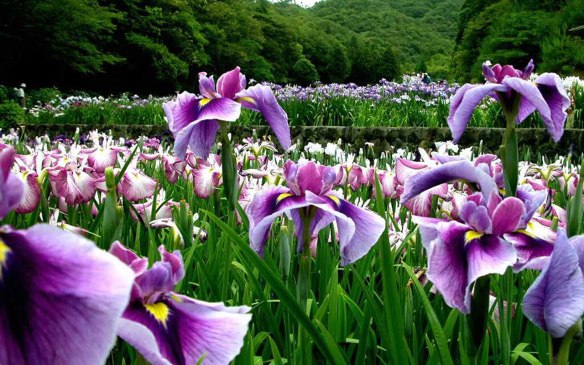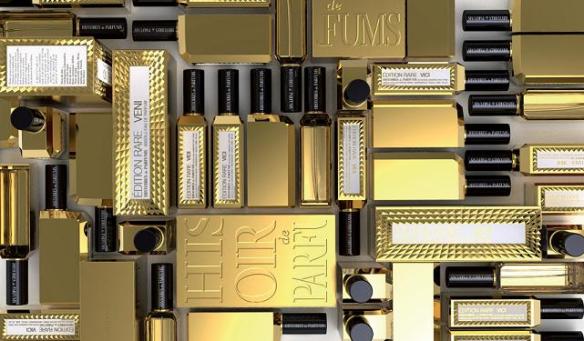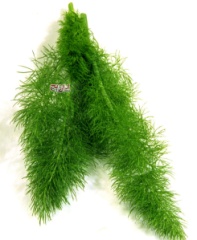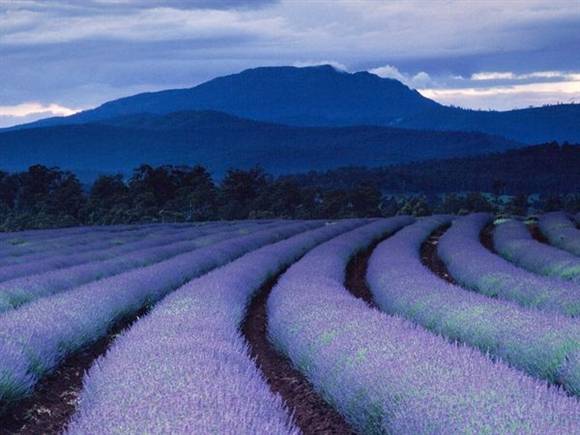John Wayne riding through the arid desert canyons of New Mexico. Gary Cooper in a suit in the bracing, brisk air of Normandie. Two very different images of two very different men stemming from two very different fragrances in Dior‘s prestige La Collection Privée line of perfumes. (The line is sometimes called La Collection Couturier on places like Fragrantica and Surrender to Chance, but I will go with the name used by Dior itself on its website.) The fragrances are Leather Oud and Granville, and both were created by François Demarchy, the artistic director and nose for Parfums Dior, to reflect different aspects of the life of Christian Dior.
Category Archives: Aromatic Fragrances
Perfume Review: gs03 by Geza Schoen for biehl. parfumkunstwerke
Perfume as art. Individuality, purity, modernity without the limitations of commercialism, and uniqueness. It that may not be for the masses, but that is not the goal of biehl. parfumkunstwerke. (For the sake of simplicity, I will refer to the house as “Biehl” in this review, even if the capitalization is not the official form of the name.) Biehl is a German niche perfume house founded by Thorsten Biehl who explicitly sought to create “an olfactory gallery. a free space for perfume artists” to be artists without commercial, mass-market considerations. To that end, it has given free rein to some of the most avant-garde perfumers, like Geza Schoen (or “Geza Schön”), to pursue a more intellectual approach to perfumery.
To me, the house has a vision that seems very German in its ethos of avant-garde minimalism and purity. That trend is reflected in both the intentionally fluid, minimalistic packaging of the bottles and in the perfumes’ names. As the website states: “no borrowed concepts of super-model dream worlds. no extravagant packaging frills. no try-hard bottle design. instead we concentrate on what is essential – the perfume.” Each fragrance comes in a minimalist bottle, and is named simply after the initials of the perfumer, followed by the index number of his works.
Thus, the new perfume, gs03, stands for Geza Schoen and for the fact that it is his third creation for the perfume house. It is part of Biehl’s Young Savages collection which also includes fragrances by Mark Buxton and Patricia Choux, and two others by Geza Schoen, for a total of eight fragrances in all. gs03 is the very latest addition to the line, an eau de parfum that seeks to reinvent and restructure the concept of eau de cologne — only with 20% concentrated perfume oil. As the press release explains, in part:
Scope: to rejuvenate the ‘eau de cologne’ theme for the 3rd millennium. […]
It was however a complex restructuring process to modernize such a well-known scent. The traditional, overpowering freshness of orange flower, neroli, and citrus notes needed the depth, warmth, and lasciviousness of modern musk notes, benzoe siam, moss, and castoreum. The result: ostensibly clear and innocent – provocatively innocent, disrespectful – how beautiful.
Head: Fresh yet tender Neroli, orange flower absolue, mandarine, juniper, schinus molle [pink peppercorns].
Heart: Lustrous elegance. A fusion of iris absolue, rose oil and hedione.
Fond: Sophisticated sensuality. Vetiver, castoreum, musk, benzoe siam, moss, tonka, cedarwood.
gs03 opens on my skin with sparkling green, white and yellow notes. Hedione with its lemony nuances flits about with soft, translucent orange blossoms and greener neroli in a heavy veil of soap. Hints of evergreen and juniper evoke a snowy, white mountain top, as does the underlying musk with its clean freshness. Interestingly, the juniper smells not only of pine trees (or evergreen), but also of gin.
The bouquet shines as brightly as a pristine, white, Alpine landscape, channeling the outdoors with such a crispness that it almost feels as though you were crunching on snow. Yet, despite the brisk, outdoors-y overtones, there are also flickers of warmth from the sweet orange blossom. Thanks to the sparkling, green effect of the hedione and the edgy, almost aquatic coolness of the juniper, it’s never indolent, thick, or syrupy, but, instead, airy and green. The overall impression is of a fragrance that is extremely aromatic, light, clean, energizing and fresh, but also incredibly soapy. Far, far too much so for my own personal tastes. (Soapiness is only a step below the dreaded ISO E Super in my estimation….)
What’s interesting about gs03 as a whole — and what starts to become noticeable less than five minutes into the perfume’s development — is the chiaroscuro effect. Contrasts abound all over the place: light and dark; crisp cologne but with a parfum feel; airy, breezy twists on indolic, usually heavy essences like orange blossom; and alpine, white coolness with warmer, peppery, or deeper hues. Flashes of darkness start to emerge, first with subtle whiffs of vetiver and moss in the base, almost paralleling the brisk evergreen and juniper lurking about the top. Then, slowly, slowly, hints of castoreum — a most unusual element in this sort of mix. In general, and as Fragrantica explains, castoreum has an aroma which can range from animalistic and leathery, to fruited, musky, or sweetly carnal. Here, in gs03, it creates more of a feel, if that makes sense: warm, plush, velvet, and languid. It never smells like raw, animalistic leather; instead, there is the subtlest hint of warm suede to its plushness.
Thirty minutes in, gs03 shifts a little. There is a soft breath of fruity, pink peppercorns, and, alas for me, the start of ISO E Super. Geza Schoen clearly loves the blasted aromachemical like nothing else in the world, and I guessed it would be an inevitable part of gs03, but still, I had held out hope that just once (once!) he may stop hugging it to his bosom like treasured gold. Nope, it’s in there. The quantity is not the scarring, utterly traumatic nightmare that it was in his Montabaco for Ormonde Jayne, but there is enough ISO E Super to give me a headache — which doesn’t happen to me unless a perfume has quite a bit of the bloody stuff. Still, on a positive note, and to my relief, the ISO E Super is relatively bearable in gs03, smell-wise. It’s not an antiseptic horror that evokes hospitals or chemistry experiments, there is no rubbing alcohol nuance, and it doesn’t smell abrasive or harsh. In fact, it is simply a low-level, throbbing, woody hum (to paraphrase how Luca Turin once described ISO E Super) that adds a velvety touch to the base. Still, those of you who always get searing migraines from the note (or from the Ormonde Jayne line) should take heed.
As time passes, gs03 begins to reflect different elements. Around the start of the second hour, the perfume turns warmer, softer, woodier and more layered. On the surface, the primary bouquet is still a soapy orange blossom, gin, and lemon triptych, but there are far greater nuances lurking below. The cedar element is much more prominent and peppery; the white musk smells much warmer and less bracingly clean; the oakmoss starts to make its presence noticeable with a grey, dry nuance; and there is a faintest tinge of bitter greenness hovering around the edges. Even one of the top notes — the lemon — has changed a little. It now smells a lot like lemon verbena, thanks to a rather creamy richness that has taken over.
All these elements change the visuals from that of a pristine, cool, crisp, outdoor scene high atop a snowy Alpine mountain speckled with pine and juniper trees, to something that takes further below in a fragrant valley warmed by the sun. The image is further underscored around the middle of the third hour when gs03 turns into a very woody, musky scent. The top notes are rather amorphous and abstract, but they are supported by a slightly rooty vetiver and an increasingly prominent iris note. The soapy orange blossom has receded to the background, along with the lemon note, adding a muted floral touch.
Starting in the fourth hour and all the way through to the middle of the seventh, gs03 turns into a lovely iris fragrance. The note is neither powdery, nor really very rooty. Rather, it’s cool, faintly floral, restrained and strongly evocative of buttery, grey suede. It adds to the overall feel of gs03 in this second stage as something plush, velvety and smooth, instead of being hygienically fresh. The perfume no long evokes the scent of a man’s skin right after he’s taken a shower and then splashed on a citric cologne. Instead, gs03 now radiates a sort of controlled warmth and perfumed softness that is elegant, sophisticated, and refined. It’s hard to explain, and I’m undoubtedly not doing it justice, but I’m starting to agree with the press release description of gs03 as “lascivious purity, warm, subtle, hidden seduction.” Well, “lascivious” goes too far (and I’d personally use the word “refined” instead), but the rest of it is certainly very accurate. There is something about the richness of that iris absolute which adds smoothness and elegance to gs03.
The perfume remains as an iris scent backed by vetiver, gin, woody musk, soapiness, and darting flickers of orange blossom for another few hours, softening all the while. By the end, gs03 is simply an amorphous, soapy, musky scent with the faintest impression of something woody flittering about its edges. All in all, gs03 lasted just under 10.25 hours on my voracious skin, and the sillage was generally moderate. The perfume only became a skin scent around the seventh hour, which is pretty good indeed.
As noted at the start, gs03 is a brand new fragrance; in fact, it was launched in Berlin just a few weeks ago. On Fragrantica, the only person who has tried it thus far considered it to be a fresh, uplifting, earthy cologne that turned muskier over time. In a separate article for Fragrantica, The Perfume Shrine‘s Elena Vosnaki found a few parallels with Jean-Claude Ellena‘s fragrances, but, ultimately, far greater differences in overall style and approach. Her experience with gs03 is actually quite similar to mine, minus the deluge of soapiness and the issue of the ISO E Super. Her review reads, in part, as follows:
The top note is as clear as a church bell pealing on a mountain top in the Alps, but at the same time quite soft, comprised of a pink pepper note (allied to what can only come across as sweet lemon to my nose) which reveals a less sharp than citrus, slightly fruity-rosy scent carried far by the scent of the alcohol carrier. The rejuvenating scent of juniper gives an herbal accent that recalls the bracing feel of downing a good gin. The lemony touch just aids in bringing forth the herbal aspects of juniper berries. […] The gin and tonic combination is as perennially pleasing as a button-down oxford shirt in white; it just works in any situation, on any wearer. It’s also effortless […] [¶]
… It seems to me that there is also a bitterish artemisia hint, a tickling of the sinuses which aids the pungent freshness of GS03; it would serve as both a contrast and a modifier, rendering the juniper fresher and the rest fruitier by contrast. The anchoring elements consist of the musky-woody hum which we have come to associate with Geza Schoen, with an added layer of castoreum, just enough to give interest. […]
GS03 has Geza Schoen’s signature style all over it: fused into the skin, it gains in warmth and sensuality as the body heats up; always on the brink of consciousness but never quite openly there. I catch whiffs now and then and if I lean over the spots I sprayed it’s most definitely there, but it doesn’t come across as “you’re wearing perfume.”
I agree with almost all of it, but especially with her last paragraph: gs03 really does melt into the skin as something that is like an elegant, clean extension of your own, slightly warmed body, only with a subtle hint of musky, woody florals.
Given my personal tastes, I’m far from the target audience for gs03, but I think those who are in that group will like it. It’s a good perfume which completely meets Biehl’s stated goals of taking an eau de cologne and re-imagining it as something with greater depth, warmth and modernity. gs03 is also intended to be something elegant for casual, perhaps daytime, use — and I can see that as well. It’s absolutely unisex, versatile, and easy to wear. Those who are looking for something very fresh, clean, and understated, but with a soft, refined, floral, woody touch will undoubtedly enjoy it quite a bit. And its moderate sillage combined with excellent good longevity makes gs03 perfect for office wear. In fact, there is such a professional feel to its restrained, elegance that I keep visualizing a banker in an expensive, dark business suit. It certainly is a fragrance that morphs drastically from that opening image of a crisp, cool snowy Alpine landscape dotted by pine trees and with orange blossom as the sole burst of bright colour. And the iris part is very pretty, indeed. My only word of caution is that you have to really like soapy scents and clean, white musk. If you do, then give gs03 a sniff.
DISCLOSURE: Perfume sample, courtesy of Hypoluxe. I do not do paid reviews. As always, I make it clear in advance to the perfume company or to distributors that there is no guarantee of a positive review — or even any review at all. My first obligation is to my readers, and to be completely candid in my opinions.
DETAILS:
Cost & Availability: gs03 is an eau de parfum that comes in a 100 ml/3.3 fl oz bottle and which retails for $195 or €150. In the U.S.: gs03 is available at Lucky Scent, Osswald NYC (but not yet listed on their online website), Avery Fine Perfumery New Orleans, Blackbird Ballard Seattle, and Henri Bendel NYC (also not yet listed on their website), with selected additional stores to follow. In Europe: gs03 is obviously available at Thorsten Biehl’s biehl. parfumkunstwerke in Hamburg, though their website does not seem to have an e-store. It is also carried at Essenza Nobile for €150.
Perfume Reviews: Vidi, Vici by Histoires de Parfums (Veni, Vidi, Vici Collection)
Caesar didn’t conquer everything. Vidi and Vici — perfumes from Histoires de Parfums‘ Veni, Vidi, Vici trilogy of perfumes in the Editions Rare Collection — reminds me more of Caesar’s tragic downfall than his stratospheric rise to power and victories. For all that I thought the first perfume in the line, Veni, was a triumph, I found Vidi and Vici to be significantly less so.
As yesterday noted in the Veni review, the 2013 perfume trilogy is a tribute to Caesar’s famous phrase (“I came, I saw, I conquered“) from the Gallic Wars. Each eau de parfum represents a different natural element: Veni focuses on the Earth; Vidi on the Wind; and Vici on the Fire element. Yet, they are all linked by one common olfactory thread: they all have cardamom. This review will focus on the latter two scents in the collection.
VIDI:
 As I explained yesterday, when I first saw the notes for the collection, I didn’t find them very appealing. They seemed odd, discordant, and a very peculiar mix, but Veni was so lovely, it told me that I shouldn’t pre-judge and I should keep an open mind. Nonetheless, as I stared again at the notes for Vidi, the second in the collection, I couldn’t help but swear. As compiled from both Histoires de Parfum‘s description and Fragrantica, Vidi‘s notes are:
As I explained yesterday, when I first saw the notes for the collection, I didn’t find them very appealing. They seemed odd, discordant, and a very peculiar mix, but Veni was so lovely, it told me that I shouldn’t pre-judge and I should keep an open mind. Nonetheless, as I stared again at the notes for Vidi, the second in the collection, I couldn’t help but swear. As compiled from both Histoires de Parfum‘s description and Fragrantica, Vidi‘s notes are:
Top Note: cardamom, cucumber, ozone effects
Heart Note: plastic rose, cyclamen, water effects, saffron
Base Note: immortal absolu, musk, ambergris, vanilla, white wood
Cucumber and cardamon? Ozonic water effects? With maple syrup Immortelle and Cyclamen (which Fragrantica tells me is a pure synthetic meant to be a clean, fresh floral scent)? Plastic rose?
I was determined, however, to keep an open mind, so I sprayed on Vidi and…… Holy Mother of God! Somewhere on a darkened Scottish moor and under a full moon, there are three, blind crones cackling over a cauldron of Vidi while Lady Macbeth frantically tries to scrub off a damned spot of the perfume. Words…. words utterly fail me. Nothing I say will truly describe the unholy hell that is Vidi, but I shall try.
 Vidi opens on my skin with an overpowering, nuclear blast of antiseptic mixed with watery cucumber. The abrasive astringent is exactly like the cheap, drugstore acne medicine that teenagers use. Yet, the smell (and the ISO E Super responsible for it) is actually not the real problem. You see, within seconds, the watery, ozonic notes are joined by a shockingly discordant rush of chocolate-y cardamom. For a few minutes, the intensely odd mix of cucumber and cardamom-chocolate duke it out, egged on from the sidelines by an odd, synthetic floral note and by vanilla. It’s so revolting, you have no idea. The vanilla has an eggy quality which clashes with the metallic, aquatic notes as much as everything else. Underneath the whole thing is the cheap, drugstore acne medicine provided by ISO E Super.
Vidi opens on my skin with an overpowering, nuclear blast of antiseptic mixed with watery cucumber. The abrasive astringent is exactly like the cheap, drugstore acne medicine that teenagers use. Yet, the smell (and the ISO E Super responsible for it) is actually not the real problem. You see, within seconds, the watery, ozonic notes are joined by a shockingly discordant rush of chocolate-y cardamom. For a few minutes, the intensely odd mix of cucumber and cardamom-chocolate duke it out, egged on from the sidelines by an odd, synthetic floral note and by vanilla. It’s so revolting, you have no idea. The vanilla has an eggy quality which clashes with the metallic, aquatic notes as much as everything else. Underneath the whole thing is the cheap, drugstore acne medicine provided by ISO E Super.
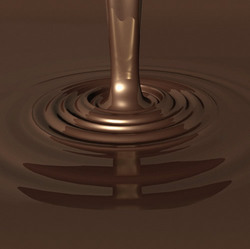 Yet, despite all these individual nuances, the overall and primary impression is of watery, green cucumber slathered in thick, heavy chocolate. The synthetic quality to the perfume is profound. As noted, cyclamen is a synthetic, but I suspect that the musk and amber undertones in Vidi must be as well because the perfume starts to create a burning feeling high up in the bridge of my nose. It’s a consistent telltale giveaway for me for truly intense synthetics. As the moments pass, the discordant notes become even more jangly, for lack of a better word. The sweetness is now tinged by maple syrup, while the cucumber has a sharply metallic edge. The vanilla also feels sharp, yet there is some sourness lurking below everything. And the chocolate cardamom doesn’t go with any of it, but especially not with the cucumber.
Yet, despite all these individual nuances, the overall and primary impression is of watery, green cucumber slathered in thick, heavy chocolate. The synthetic quality to the perfume is profound. As noted, cyclamen is a synthetic, but I suspect that the musk and amber undertones in Vidi must be as well because the perfume starts to create a burning feeling high up in the bridge of my nose. It’s a consistent telltale giveaway for me for truly intense synthetics. As the moments pass, the discordant notes become even more jangly, for lack of a better word. The sweetness is now tinged by maple syrup, while the cucumber has a sharply metallic edge. The vanilla also feels sharp, yet there is some sourness lurking below everything. And the chocolate cardamom doesn’t go with any of it, but especially not with the cucumber.
Regular readers know that I will bear with almost anything for the sake of a thorough, full review — and for hours and hours at that. I will endure even notes that feel like urinous panther pee, synthetic, cotton fabric softener, or the ISO E Super that I loathe more than anything. But I couldn’t do it with Vidi. I tried my best but, 15 minutes in, I was actually dry-heaving after every sniff. When a scent triggers a gag reflex, it’s time to throw in the towel.
If you’re interested in other assessments of Vidi, you can try Fragrantica (where one person also gave up due to the almost 80% ISO E Super and Ambroxan, as well as the “plastic cucumber”), Lucas’ very ambivalent, dubious review for Chemist in The Bottle, or Ines’ assessment on All I Am — A Redhead. Normally, I would quote a few comparative assessments, but the mere memory of Vidi makes me want to gag. If you want my opinion, I would stay far away from Vidi.
VICI:
 If Veni was meant to evoke the Earth and Vidi meant to evoke Water, then Vici is centered on the last element, Fire. The notes, according to Histoires de Parfums and Fragrantica, are:
If Veni was meant to evoke the Earth and Vidi meant to evoke Water, then Vici is centered on the last element, Fire. The notes, according to Histoires de Parfums and Fragrantica, are:
Top Note: angelical roots [angelica], cardamom, pink peppercorns, basil, galbanum, aldehyde
Heart Note: rustic lavender effects, céleri graine [celery seed], iris concrete, osmanthus absolu, essence incense
Base Note: patchouli oil, musk, vanilla, cedar, raspberry.
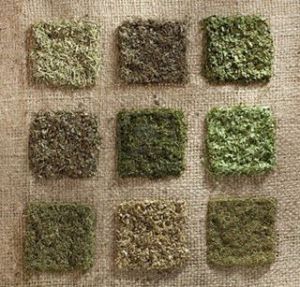 Vici didn’t evoke either fire or “victory,” in my mind. Instead, it felt like nothing more than the dark recesses of a very dusty, very old herbal shop lined with cedar and potpourri. Vici is an incredibly dry, acrid, dusty herbal scent, in my opinion, that evokes a landscape of desiccated green colours. It opens on my skin with incredibly arid, pungent, dry basil with heaping amounts of what smells like dried mint and dried tarragon, along smaller doses of dried angelica, dried violet leaves, and dried red fruits. If you sense a theme emerging, you’re not mistaken. Have I mentioned the word “dry” yet?
Vici didn’t evoke either fire or “victory,” in my mind. Instead, it felt like nothing more than the dark recesses of a very dusty, very old herbal shop lined with cedar and potpourri. Vici is an incredibly dry, acrid, dusty herbal scent, in my opinion, that evokes a landscape of desiccated green colours. It opens on my skin with incredibly arid, pungent, dry basil with heaping amounts of what smells like dried mint and dried tarragon, along smaller doses of dried angelica, dried violet leaves, and dried red fruits. If you sense a theme emerging, you’re not mistaken. Have I mentioned the word “dry” yet?
The overpowering impression is of dried green leaves from one’s pantry or kitchen cabinet, atop a base of musk, cedar and dried potpourri-like patchouli. Smoke flickers in the background, as does ISO E Super, though it’s nothing like the tidal wave blast in Vidi. Nothing in Vici evokes fire or richness to me; there is nothing that is either fresh and juicy like fruit, nor sumptuously molten like lava. It’s simply a desiccated landscape dominated by dry, green kitchen herbs.
Vici doesn’t change significantly with the passage of time. Thirty minutes in, the dried herbal angelica and celery seed notes rise to the surface, accompanied by what smells like dried green tea. I assume the latter stems from the osmanthus which can sometimes have a tea-like character but, here, it’s as dried as everything else. The remaining notes — like the violet leaves — have dropped away, leaving only an impression of vague, abstract woods. Thankfully, the ISO E Super has also retreated. In its place is a flicker of raspberry that pops up every now and then before flitting away. The whole thing is incredibly low in sillage and feels very thin. Less than an hour into Vici’s development, the perfume morphs into a very muted, amorphous, general sense of dried green herbs and lightly musked, peppered woods. The raspberry flickers occasionally, the ISO E Super is always there in the background, but the perfume is primarily abstract, dry, green and woody. Vici remains that way for a few more hours, becoming sheerer and more amorphous with every passing hour until, finally, about 4.5 hours later, it fades away as nothing more than abstract woody musk.
Vici wasn’t a terrible perfume, but it’s not a great one, either. Frankly, I didn’t think it was very special, and it’s certainly not worth $175 in my opinion. Even apart from the sillage and longevity issues, it lacks great depth, body, richness and balance. There is little to counter the overpoweringly arid, almost bitter, nature of the perfume. And, frankly, I’m not keen to smell like the inside of my pantry’s dried herbs section. A greater sin perhaps is that the perfume was fundamentally boring, in my opinion. I can barely summon up the energy to describe it at greater length — and regular readers will know that I love details. But Vici leaves me feeling so utterly apathetic and disinterested, that I shall end this review here and now.
DETAILS:
Cost, Availability, & Samples: Veni, Vidi, Vici are all Eau de Parfum concentration perfumes from the “Editions Rare” Collection. They come in just one size: 2.0 oz/60 ml for $175 or €125. The perfumes are available directly from Histoires de Parfums with free shipping for all orders anywhere in the world for purchases over $130. As part of the special “Editions Rare” series of perfumes, it doesn’t seem that samples are available or that the perfumes are part of the Histoires de Parfums’ fantastic sample program. (6 samples of your choice whose $20 price goes towards the purchase of a large 4 oz. bottle. Further details are available here as to how the sample process works for general reference.) In the U.S., Veni, Vidi, Vici are available from Luckyscent or MinNY along with samples. I can’t find this collection listed on either Aedes, BeautyHabit or the Perfume Shoppe. Outside the U.S.: I couldn’t find the Editions Rare collection or Veni, Vidi, Vici at either Roullier White in the UK or Jovoy Paris which normally carries Histoires de Parfums, so I’d check in-store. Furthermore, only Vici is available at First in Fragrance which sells it for €125 the 2 oz/60 ml bottle, not the other two. However, Histoires de Parfums vast Store Locator that lists retailers from South Africa to Turkey, the Netherlands, Sweden and Kuwait. I’d check there for a store near you and hope that they carry the Editions Rare Collection. Samples: You can find samples at the retailers linked to above. Surrender to Chance has samples of each of the 3 fragrances starting at $7.99 for a 1 ml vial, or the full set of 3 fragrances for $21.99.
Perfume Review: Histoires de Parfums 1725 (Casanova)
Famous characters and mythical years, captured in a bottle. The lyrical, olfactory tribute to history is at the heart of Histoires de Parfums, a French niche perfume house founded in 2000 by Gérald Ghislain. As the Histoires de Parfums website explains, each of the early fragrances was entitled just with a date in history, the year in which a legendary figure was born. In the case of “1725,” it was Giacomo Girolamo Casanova who is best known for being a libertine, lover and seducer of women, though he was also much, much more. For example, did you know that some scholars believe Casanova helped write some of the lyrics to Mozart’s Don Giovanni opera, that he translated the mighty Iliad, got into a heated debate over religion with the brilliant Voltaire, or that he was a highly respected political advisor?
I bring up these other attributes because some may think that a perfume dedicated to Casanova would be a mighty oriental, intended to seduce with opulent, sensuous notes — and they would be mistaken. Histoires de Parfums has taken a very different tack with 1725, creating an aromatic fougère with gourmand qualities. The company’s full description for 1725, along with its notes, is as follows:
Venice, the riparian city of love. In that year of 1725 was born the man whose name would symbolize seduction: Giacomo Girolamo Casanova.
« What is love then? An illness to which man is prone to any age », claimed the one who was one after the other abbot, officer, scholar, writer, banker, con artist, magician, infantryman, spy, diplomat, but always claiming his Venetian origins. For every Casanova, here is an eau de parfum inviting intense pleasure, an amber fern mixing fine wooded tunes and touches of lemony freshness, sublimed by the elegance of lavender. Warmed with heady spices and colored by sweet fruits.
Originality: vanilla lavender combination.
Top Note: Bergamot, Citrus, Grapefruit, Licorice
Heart Note: Lavender, Star Anise
Base Note: Vanilla, Almond, Sandalwood, Cedar, Amber
1725 Casanova doesn’t evoke either the man or sybaritic Venice to me. Instead, I’m taken to modern Provence, perhaps the Luberon before Peter Mayle’s wonderful Year in Provence books made it less of a magical secret. I see vast fields of lavender infused by the aroma of a thousand patisserie shops at its base. They are filled with vanillic almond croissants, pate d’amande, aniseed galettes, and frothy vanilla drinks. Surrounding the lavender fields is a long avenue of cedar trees that create a bridge to the orchards of yellow lemons and zesty yellow grapefruits. The corridor of woody trees is occasionally tinged by smoke but, more frequently, by that wafting scent of vanilla from the patisseries at the bottom of the hill. To me, that is the perfume in a nutshell.
1725 Casanova opens on my skin with aromatic herbs and citruses with underlying spices and a quietly muted leather note. The lemon is zesty, fresh, very crisp and similar to the juice in unsweetened lemonade. The grapefruit is similarly yellow and tart. Intermingled with both notes is lavender that feels smooth, not bitter or pungent. A little bit of spicy anise flickers at the edges and, within seconds, is joined by some very exuberant almond atop a light vanilla base.
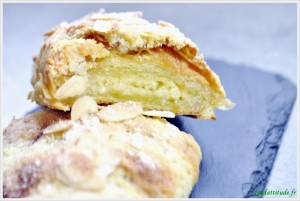
Croissants aux amandes via foodattitude.fr http://www.foodattitude.fr/article-croissants-aux-amandes-113855705.html
The almond and vanilla notes are in sharp contrast to the lavender and citrus. The former evokes a French breakfast pastry; the latter, the herbaceous hills of Provence where fields of lavender meet orchards of citrus fruits. The sweetness of the almond-vanilla accord prevents Casanova’s opening from feeling like a primarily masculine fragrance with its typical fougère combination of herbaceous, aromatic citruses and lavender.
Still, the perfume seems almost split into two until, about five minutes in, a bridge is formed between the two camps, thanks to the advent of the cedar note. It’s just barely peppered but, instead, creamy and backed by lightly spiced anise. The latter doesn’t feel like black licorice candy or even dried star anise; instead, it feels more like the fresh green fronds of an anise vegetable or, as Americans call it, fennel. It’s a beautifully delicate, subtle note, especially when mixed with the creamy wood accord, and the two together help to bridge the divide between the other competing groups. But I still found 1725 to be a bit jangly and discordant at the beginning.
Twenty minutes in, 1725 Casanova turns into a smoky cedar and lavender perfume, with the tiniest dash of citrus and anise notes– all over a vanilla-almond base. The cedar note is beautiful, especially with the lavender — a note that some of you know that I absolutely despise in large quantities. Here, however, it is well done, adding just a subtle aromatic herbaceous quality to the peppered woods while also feeling airily creamy and sweetened. It helps that it’s subtle, creating an overall gauzy haze over the notes, but never smelling like those revoltingly concentrated sachets of dried lavender that were as ubiquitous in the South of France (especially Cannes) as the air you breathed. (If you lived in Cannes, which is right next to Grasse, you were so inundated by lavender sachets, oils, perfumes, creams, bath products, and lavender of every possible formulation, you ended up almost being traumatized. Few places in the South of France are so deluged and bombarded with the note as Cannes which is only about 18 minutes away from the world’s center of perfumery and lavender. So, by the time we escaped to Monte-Carlo, it was too late; I was scarred for life with a searing, deeply rooted, life-long lavender phobia.)
To my surprise, it is actually the vanilla note in 1725 Casanova with which I have greater difficulty. Infused by almond like that in pate d’amande, there is something extremely sickly about it. And, despite its generally light airiness, it feels both cloying and somewhat synthetic. Thankfully, however, about an hour into Casanova’s development, it softens and becomes significantly better. No longer cloying and quite so jangly (for lack of a better term), it mellows out into a much more harmonious note, blending in well with both the marzipan-like almond and the lavender.
Starting at the 90 minute mark and for the rest of Casanova’s development, the perfume becomes a well-modulated, balanced, almondy-vanilla fragrance that has almost a heliotrope-like quality and which is infused with light, sweetened lavender — all atop a base of smoky wood notes touched fleetingly with softly spiced, herbal anise. It’s not dessert-like or gourmand; 1725 has too much lavender, light smoke and dry woods for that, but it’s also not a truly masculine fougère, either.
1725 remains that way until its very end, never changing in any dramatic way but merely softening until, finally, it is nothing more than a soft vanilla with a touch of lavender over an abstract, woody base tinged with the smallest whisper of smoke. Its sillage was generally moderate at the start, never projecting loudly; this is far too refined a fragrance for volume. Instead, it creates a very small, soft cloud within which the perfume is quite detectable. 1725 Casanova became a skin scent around the fourth hour, remaining there for a number more hours until it finally faded away shortly after the 8 hour mark.
It is surprisingly pretty — even to one who despises lavender. I wore 1725 Casanova to dinner with my parents and, to my surprise, it was a huge hit with the two biggest perfume snobs I know. I don’t know who is more difficult to please: my mother or my father. Almost everything I make them smell is greeted with disdainful silence and a faintly curled lip. Occasionally, there is a single raised eyebrow, a faint shudder, and a horrified comment on the state of modern perfumery. (“Why would anyone want to smell like food??!!) Out of perhaps 50 recent fragrances, I can only remember four or five perfumes receiving enthusiastic approval. Yet, both of them really liked 1725. Frankly, I couldn’t quite believe it. They did disagree somewhat on how powerful a perfume it was: my father thought it was strong; my mother scoffed. And, to my amusement, my mother refused to believe that 1725 Casanova was technically classified as a masculine fragrance. Simply refused. (“That’s a woman’s perfume,” to which my father responded, “Who cares? It smells really good.”)
I agree with both of them. 1725 Casanova is about as unisex as it comes. It’s also an extremely wearable, easy fragrance that would fit a variety of casual situations. I myself wouldn’t go near lavender on any frequent basis (let alone spend actual money on it), but if I think 1725 Casanova is pretty, then those with less violent lavender antipathies may love it.
On Fragrantica, opinions seem split. Half the posters think 1725 Casanova is a charming, lovely, wearable, and even elegantly sophisticated scent; the other half think it’s not hugely interesting, especially as compared to some other Histoires de Parfums perfumes. (The aggressively masculine leather scent, 1740 known as Marquis de Sade, is often mentioned.) Men seem to be more critical, while the few women who have reviewed 1725 seem to like it for themselves. And I think both facts really sum up the perfume: it’s not a very masculine scent, let alone a complicated one. As such, it will fall short with men who prefer the more unusual, and much more obviously masculine, fragrances from the same brand. Yet, there are enough admirers who find it utterly “charming” and timeless to show that it really depends on whether you want something classically elegant or something a little more rakishly adventurous.
One such admirer is the famous perfume critic, Luca Turin, who categorizes 1725 Casanova as an “Anisic Lavender” and gave it a Four Star review in Perfumes: The A-Z Guide:
Anisic notes are hard to handle in perfumery: they are sweetly happy on their own (few things smell better than star anise in a bag) but usually stand out in ensemble playing as a pan flute would in a string quartet. This clever fragrance associates two such notes, licorice and star anise, to a lavender-citrus structure and somehow clips the whole thing together with a touch of heliotropin and cedarwood. Top and heart are wonderfully melodious, and the drydown comes close enough to L’Heure Bleue to feel its gravitational pull, but then escapes again. Very good.
My experience wasn’t identical to his, especially as I never detected a strongly black licorice note and the anise one was much more like soft fennel than truly spicy, almost bitterish, woody, very pungent, dried star anise. That said, I can see why he would compare 1725’s drydown to L’Heure Bleue, and I do think it’s a good fragrance — even with the lavender.
As a final note, a huge number of people on Fragrantica seem to think 1725 Casanova resembles MDCI‘s Invasion Barbare. I haven’t tried or reviewed the latter, so I can’t comment, but 33 people voted on the similarity on each perfume’s page. A few noted subtle differences, such as one commentator who said that Casanova was similar but “with the violet removed and the notes toned down and refined.” All I can tell you is that 1725 is significantly cheaper than the MDCI fragrance: a 2 oz/60 ml bottle of Casanova costs $125, while the exact same size for Invasion Barbare costs $250.
In short, if you like anise and lavender, then I’d definitely recommend giving 1725 a sniff.




